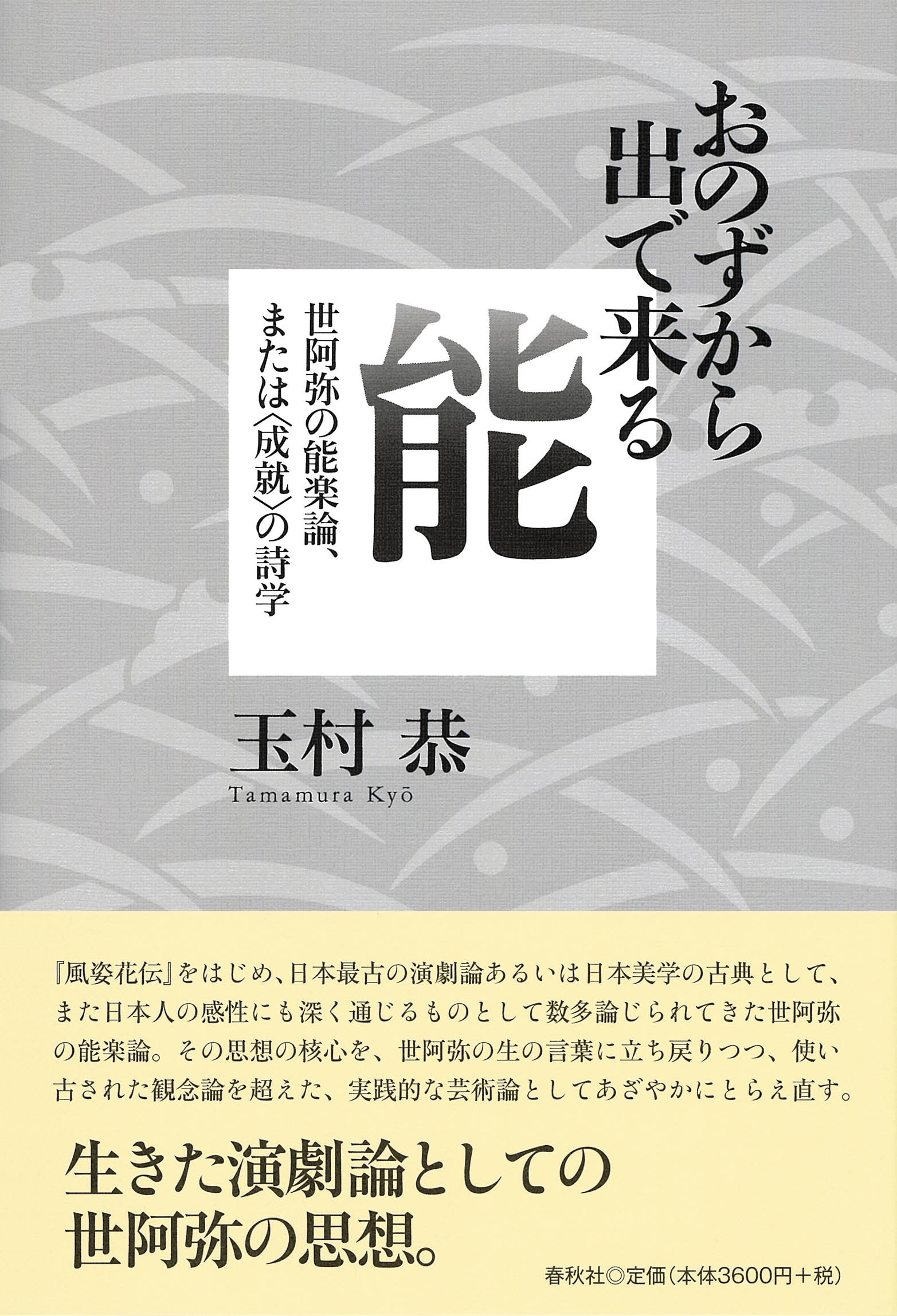
Title
Onozu kara idekuru Noh (Noh that blooms of itself: Zeami’s Noh treatises, or the aesthetics of consummation [Joju])
Size
336 pages, 127x188mm
Language
Japanese
Released
December 14, 2022
ISBN
9784393930397
Published by
Shunjusha Publishing Company
Book Info
See Book Availability at Library
Japanese Page
This book presents Zeami’s Noh theory specifically as an art theory, with clear presentation of the characteristics of Zeami’s thought from an aesthetic (history) perspective. This book asserts Zeami’s position as a leading thinker in the arts, and it explores how he thought about so-called aesthetic and artistic topics.
Here, “aesthetic and artistic topics” are, for example, the aesthetic “worth” of a performance artwork such as music or a play to an audience, as well as the types of sentiments these aim to evoke. In what manner are these values and emotions communicated (or not) to viewers (listeners)? What kind of performance skills and techniques will best stimulate desired aesthetic emotions?
Of course, Zeami was a Noh performer who lived 600 years ago and was certainly not an “artist” in our contemporary sense. Neither is he at all connected with modern concepts of “art.” Nevertheless, Zeami’s awareness of artistic expression-related issues overlap in more than a few areas with contemporary concerns. Many of the ideas he wrote of correspond with our interests. However, I have found that the possibilities inherent in his theories have not been sufficiently determined in previous research.
The chief trend in Zeami research has been to consider his explanations as historical documents, utilizing his writings as containing thoughts regarding a certain way of living. Such research has certainly illuminated many important facts. My book, however, consciously avoids this approach, and brings artistic concerns to the forefront. I believe that this is an effective means of drawing out the contemporary significance of Zeami’s thought.
In the past quarter of a century, there have been major advances in aesthetics, art studies, and cultural research. Foundational concepts in arts and art theory exegesis have been shaken to their cores, including “art,” “artist,” “(creative) work,” and “author.” Today, we look for new ways of viewing and considering art and beauty. This is in fact an optimal time for a new analysis of Zeami’s theories, due to our urgent need to revise our opinions in ways that differ from the mainstream ideas in previous research. This is the fundamental orientation of this book.
Consider, for example, Zeami’s famous teaching of “do not forget your initial intent.” Today, we tend to think of this as indicating a kind of precept to live by. Zeami did not state this primarily as a suggestion for daily life; fundamentally, he considered never losing sight of one’s beginnings an efficient means for enhancing performance effects. Zeami stresses that forgetting the “initial intent” results in reduced precision of performance (i.e., this “initial intent” is not an issue of mindset, but purely a matter of expression). Why would he think in this way? In what way will our performance “enhance” if we do not forget our “initial intent”? These are the type of inquiries that should be attempted. (In fact, Zeami further develops this into a radical claim that forces us to reflect on our ways of looking at life and education, which you can learn more about as you read this book.)
Just over 20 years into the 21st century, perhaps it is commonplace to question the very need for Noh. Yet, if we remove the filter through which we view Noh as a “traditional art,” and turn toward the texts with a frank and open mind, the words of Zeami will resound with power and truth to anyone who is dedicated to expression. I would be overjoyed if you could sense and appreciate the profundity of Zeami’s thought and the unfathomed depths of this art (yes, I will use this term) of Noh through your reading of my book.
(Written by: TAMAMURA Kyo / February 22, 2022)
Related Info
The 1st UTokyo Jiritsu Award for Early Career Academics (The University of Tokyo 2020)
https://www.u-tokyo.ac.jp/ja/research/systems-data/n03_kankojosei.html



